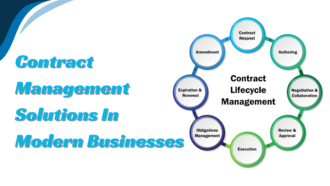The Hidden Costs of High Turnover and How to Avoid Them
- 1 Setting the Stage: Employee Turnover Unveiled
- 1.1 Part One: The Overt Burden – Visible Costs of High Turnover
- 1.2 Part Two: The Stealthy Drains – Hidden Costs of High Turnover
- 1.2.1 Hidden Cost One: The Morale Downturn
- 1.2.2 Hidden Cost Two: The Knowledge Void
- 1.2.3 Hidden Cost Three: The Reputation Damage
- 1.2.4 Hidden Cost Four: Customer Loyalty Erosion
- 1.3 The Proactive Approach: Strategies to Mitigate High Turnover
- 2 Conclusion: The Iceberg Thaw – Turning High Turnover Around
Imagine you are the captain of a ship sailing through the ocean. You spot an iceberg ahead, but you are not too worried. You can easily avoid it or break through it with your sturdy vessel.
However, what you don’t realize is that the visible part of the iceberg is only a fraction of its actual size. Beneath the surface, there is a massive chunk of ice that can damage your ship and sink it in minutes.
This is how high employee turnover can be for a business. It may seem like a minor issue that can be handled with some quick fixes, but in reality, it is a huge problem that can have devastating consequences for the organization.
High turnover is not only costly in terms of money but also in terms of morale, productivity, reputation, and customer loyalty. In this article, we will explore the hidden costs of high turnover and how to avoid them.
Setting the Stage: Employee Turnover Unveiled

Let me tell you a story. A few years ago, I worked as a manager at a software company with a high turnover rate. Every month, I had to deal with the departure of some of my best employees.
They left for various reasons: better opportunities, higher pay, more flexibility, less stress, etc. I tried to replace them as fast as I could, but it was not easy. Finding qualified candidates was hard, hiring them was expensive, and training them was time-consuming.
Meanwhile, the workload kept increasing, the deadlines kept looming, and the quality kept dropping. I felt frustrated, exhausted, and demoralized.
What I experienced was not unique. Employee turnover is a common phenomenon in many industries and sectors. It refers to the rate employees leave an organization voluntarily or involuntarily over a given period.
According to a report by Mercer, the average global turnover rate was 15% in 2020, and it is expected to rise further in 2021 due to the pandemic-induced disruption and uncertainty.
But why do employees leave? There are many factors that can influence an employee’s decision to quit, such as personal reasons, career aspirations, job satisfaction, work environment, organizational culture, leadership style, compensation and benefits, recognition and feedback, etc.
Some of these factors are more controllable than others by the employer, but they all impact the employee’s engagement and retention.
Part One: The Overt Burden – Visible Costs of High Turnover

The most obvious and measurable cost of high turnover is the direct expense associated with replacing an employee.
This includes three main categories:
Hiring expenditures: These are the costs incurred in advertising the vacancy, screening and interviewing candidates, conducting background checks and assessments, etc.
Training and onboarding outlay: These are the costs involved in orienting and educating new hires on their roles and responsibilities, providing them with the necessary tools and resources, mentoring and coaching them, etc. According to a study by SHRM, the average cost of training per employee in the US was $1,252 in 2022.
Productivity losses: These are the costs resulting from the reduced output and efficiency of new hires until they reach their optimal performance level, as well as the lost productivity of existing employees who have to cover for the vacant positions or train the newcomers. According to a report by Gallup in 2019, it takes an average of 12 months for a new hire to reach full productivity.
To illustrate these visible costs, let us consider a real-world example. According to a report by Business Insider in 2019, Walmart announced that it would reduce its turnover rate by 10% by investing $2.7 billion in higher wages and better training for its associates.
This decision was based on an analysis that showed that replacing an hourly store employee cost $3,328 on average. By retaining more employees, Walmart expected to save $300 million yearly in turnover costs.
Part Two: The Stealthy Drains – Hidden Costs of High Turnover

However, the visible costs are only the tip of the iceberg. There are also many hidden costs that are harder to quantify but equally or even more damaging for the business.
These include:
Hidden Cost One: The Morale Downturn
When employees leave an organization frequently, it can create a negative atmosphere among the remaining staff. They may feel insecure about their job stability, resent the increased workload or unfair treatment, or be demotivated by the lack of career opportunities or employee recognition. This can lead to lower morale, higher stress, lower engagement, and lower commitment.
Hidden Cost Two: The Knowledge Void
When employees leave an organization, they take their valuable knowledge, skills, and experience with them. This can create a knowledge gap in the organization, especially if the departing employees were experts, leaders, or innovators in their fields.
This can affect the quality of products and services, the innovation and creativity of the organization, and the competitive advantage of the organization.
Hidden Cost Three: The Reputation Damage
When employees leave an organization, they also leave behind their opinions and perceptions of the organization. They may share their negative experiences or grievances with their friends, family, colleagues, or even online platforms.
This can damage the reputation and brand image of the organization, making it harder to attract and retain customers, partners, investors, and talent.
Hidden Cost Four: Customer Loyalty Erosion
When employees leave an organization, they also break the relationships they have built with customers. Customers may feel dissatisfied or betrayed by losing their trusted contacts, advisors, or service providers.
They may also perceive the high turnover as a sign of poor quality or organizational instability. This can lead to lower customer satisfaction, loyalty, retention, and referrals.
The Proactive Approach: Strategies to Mitigate High Turnover

The good news is that high turnover is not inevitable. Businesses can implement many strategies to reduce employee turnover and retain their talent. These include:
Boosting employee engagement:
Employee engagement is the degree to which employees feel passionate about their work, committed to their organization, and connected to their colleagues. Engaged employees are more productive, loyal, innovative, and customer-oriented than disengaged employees.
Businesses can provide meaningful work, clear goals and expectations, regular feedback and recognition (using feedback applications autonomy and empowerment, learning and development opportunities, etc., to boost employee engagement.
Offering competitive compensation and benefits:
Compensation and benefits are the monetary and non-monetary rewards that employees receive for their work. They include salary, bonuses, incentives, health insurance, retirement plans, paid time off, etc. Compensation and benefits are important factors that influence employee attraction and retention.
To offer competitive compensation and benefits, businesses can conduct market research and benchmarking, align pay with performance and skills, offer flexible and personalized options, communicate the value proposition clearly, etc.
Nurturing career advancement:
Career advancement is the opportunity for employees to grow professionally and personally within an organization. It includes promotions, transfers, rotations, mentoring, coaching, etc. Career advancement is a key driver of employee motivation and retention.
To nurture career advancement, businesses can provide clear career paths and progression criteria, support employee aspirations and goals, facilitate internal mobility and cross-functional collaboration, invest in talent development programs, etc.
Building a positive work culture:
Work culture is the set of values, norms, beliefs, and behaviors that shape how people work together in an organization. It includes aspects such as leadership style, communication style, teamwork, diversity, inclusion, ethics, etc. Work culture has a significant impact on employee satisfaction and retention.
To build a positive work culture, businesses can define and communicate their vision and mission, promote trust and transparency, encourage feedback and innovation, celebrate successes and failures, foster social connections and fun, etc.
Recognizing and rewarding employees:
Recognition and reward are how businesses acknowledge and appreciate the contributions and achievements of their employees. They include verbal praise, written feedback, awards, gifts, etc. Recognition and reward are powerful motivators and retention tools for employees.
Businesses can recognize and reward employees effectively timely and specific, align it with performance and values, customize it to individual preferences and needs, involve peers and managers, etc.
There are many examples of companies that have successfully implemented these strategies and reduced their turnover rates.
For instance:
- Google is known for its high employee engagement levels and low turnover rates, thanks to its generous compensation and benefits, innovative work culture, and extensive learning and development opportunities.
- Costco is renowned for its loyal and engaged workforce, attributed to its above-average pay, comprehensive health care, and supportive leadership.
- Netflix is famous for its high-performance culture, which is based on freedom and responsibility, feedback and transparency, and alignment and context.
Conclusion: The Iceberg Thaw – Turning High Turnover Around
In conclusion, high employee turnover is a serious challenge that can have dire consequences for a business. It can incur visible costs such as hiring, training, and productivity expenses, as well as hidden costs such as morale, knowledge, reputation, and customer loyalty losses.
However, high turnover can be avoided by implementing proactive strategies that enhance employee engagement, compensation and benefits, career advancement, work culture, and recognition and reward.
By doing so, businesses can not only retain their talent but also improve their performance, innovation, and competitiveness.
The time to act is now. Don’t let the iceberg of high turnover sink your ship. Take the necessary steps to turn it around and sail towards success.

















